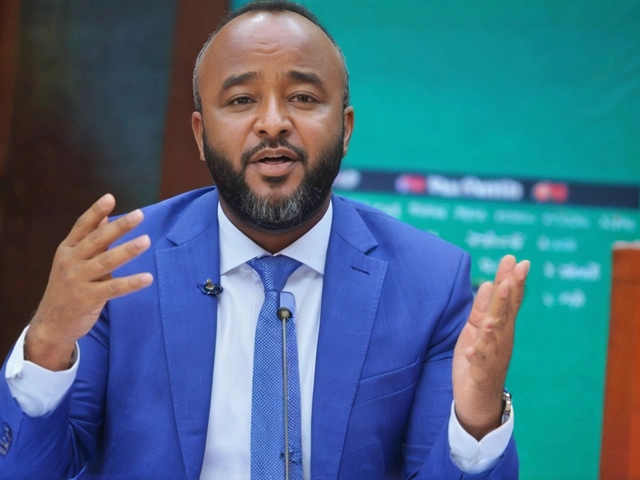As Johannesburg braces for the G20 Leaders' Summit Nasrec Exhibition Centre, the city’s traffic landscape has become a carefully choreographed operation — one that began quietly on November 15 and is now tightening like a noose around the financial heart of South Africa. The Road Traffic Management Corporation, the national body responsible for managing traffic flow, completed its first major joint operation on November 15, 2025. That day, lanes on the N1, M1, and N12 were briefly shuttered between 9 a.m. and 1 p.m. as part of a dry run for the real thing. Now, with just days to go, the real disruption is just beginning.
From Test Run to Real Lockdown
The November 15 operation was never meant to be permanent. It was a rehearsal — a chance for police, traffic officers, and emergency services to test communication protocols, route diversions, and security checkpoints. Motorists who got caught in the snarl that day were told it was temporary. And it was. But what followed wasn’t relief — it was escalation. The G20 South Africa Coordinating Committee, the official body overseeing the presidency, used its verified Instagram account (@g20org) to announce on November 18 that Maude Street in Sandton would be under lane restrictions until November 21. This wasn’t just a road closure. It was a signal: the B20 Summit was about to turn the city’s business district into a fortress.Maude Street, the artery connecting the Sandton Convention Centre to Johannesburg’s corporate towers, is now a single-lane corridor. Delivery trucks wait. Taxis detour. Commuters who once made the 10-minute drive from Sandton to the M1 now face 45-minute delays. The Road Traffic Management Corporation didn’t mince words: “Various routes will be subject to closures, lane restrictions and intermittent disruptions for security and traffic control purposes.” Translation? Don’t expect your usual commute. Don’t assume your favorite shortcut still exists.
The B20 and the Business of Diplomacy
While the world’s heads of state gather at Nasrec, the B20 South Africa Summit — the business leaders’ counterpart — is already in full swing at Sandton. CEOs, fintech founders, and global investors are not just attending meetings; they’re being shepherded through a maze of barricades and police escorts. The G20 South Africa Coordinating Committee promoted the event with hashtags like#ReKaofela and #BetterAfricaBetterWorld, but on the ground, the message is simpler: Stay clear.
For local businesses, the impact is mixed. Some restaurants near Sandton are thriving — private security firms have hired catering services for VIP delegations. Others, like small auto-repair shops on the edge of the restricted zone, are seeing sales drop by nearly 60%, according to the Johannesburg Small Business Association. “We’re not anti-summit,” says Thabo Mokoena, owner of Mokoena Auto Care. “But when your customers can’t get here, you can’t get paid.”

What’s Next: The Main Event
On November 22, the real show begins. The G20 Leaders' Summit will bring 20 heads of state — including U.S. President Joe Biden, China’s Xi Jinping, and India’s Narendra Modi — to the Nasrec Exhibition Centre. The Road Traffic Management Corporation has confirmed that the N1, M1, and N12 will face full or partial closures between 9 a.m. and 1 p.m. daily. Even the R24, the highway linking OR Tambo Airport to Sandton, will see intermittent stoppages.Public transport is being rerouted. Taxi ranks near the M1 and N1 are being relocated. The SABC News report from November 14 warned motorists: “Plan ahead and use alternative routes.” That’s not advice — it’s a command. And with foreign dignitaries arriving in motorcades with police escorts, the city’s gridlock won’t just be inconvenient — it’ll be dangerous for those who ignore the warnings.
Why This Matters Beyond Traffic
South Africa is the first African nation to chair the G20. That’s historic. But it’s also a massive logistical gamble. The country is spending an estimated R1.2 billion on security and infrastructure upgrades. For a nation still grappling with unemployment above 32% and rolling blackouts, the optics are tricky. Critics argue the money could’ve gone to schools or clinics. Supporters say this is Africa’s moment on the global stage — and the world is watching.What’s often forgotten is that these road closures aren’t just about security. They’re about symbolism. Every barricade, every detour sign, every police checkpoint tells a story: This is not just another summit. This is Africa hosting the world. The G20 South Africa Coordinating Committee knows it. So do the commuters stuck on the N1, wondering if their daily grind will ever return to normal.

What’s Still Unclear
The exact reopening time for Maude Street remains unannounced. Will it open at midnight on November 21? Or will the transition to the G20 summit mean the closures continue without pause? The Road Traffic Management Corporation has not clarified. Nor has it released a map of all affected roads — only vague advisories. For residents and businesses, that uncertainty is the worst part.And then there’s the human cost. School buses are rerouted. Hospital ambulances are delayed. Elderly residents who rely on taxis for medical appointments are now stranded. One pensioner in Alexandra told a local reporter, “I’ve waited 70 years to see the world come to us. But now I can’t even get to my doctor.”
Frequently Asked Questions
How long will Maude Street remain closed, and what’s the impact on Sandton businesses?
Maude Street will remain under lane restrictions until November 21, 2025, with no official reopening time announced. The closure has severely disrupted delivery logistics and customer access for businesses in the Sandton business district. Retailers report up to 40% fewer foot traffic, while logistics firms face 2–3 hour delays on average. Some restaurants have adapted by offering delivery-only services, but smaller vendors are struggling to survive.
Which major highways will be affected during the G20 Summit on November 22–23?
The N1, M1, N12, and R24 highways will experience full or partial closures between 9 a.m. and 1 p.m. daily during the G20 Leaders’ Summit. The N1 between the M1 interchange and Nasrec will be fully restricted, while the M1 will have alternating lane closures. The R24, which connects OR Tambo Airport to Sandton, will see intermittent stoppages for motorcades. Drivers are advised to avoid these routes entirely during peak hours.
Why is the G20 Summit causing such extreme traffic disruptions in Johannesburg?
The disruptions stem from the need to secure 20 world leaders and their entourages, including over 1,200 security personnel and 300 vehicles. Each head of state travels with a motorcade, requiring dedicated lanes, air corridors, and emergency access routes. Johannesburg’s dense urban layout — combined with its status as Africa’s financial hub — makes traffic management exceptionally complex. The November 15 drill was designed to test these systems before the real event.
Are public transport services still running during the closures?
Yes, but with major changes. Metrobus routes have been rerouted away from the N1 and M1 corridors, and taxi ranks near Sandton and Nasrec have been relocated. The Gauteng Department of Transport has added extra trains on the Rea Vaya BRT line, but riders report overcrowding. Commuters using minibus taxis are advised to check updated routes via the City of Johannesburg’s official app, as informal routes are frequently blocked without notice.
What’s the economic cost of these closures to Johannesburg’s local economy?
Preliminary estimates from the Johannesburg Chamber of Commerce suggest daily losses of R45 million during the peak closure periods, totaling over R300 million across the two-week window. Small businesses, particularly in Sandton and Soweto, are hit hardest. While luxury hotels and high-end restaurants benefit from VIP spending, the majority of informal traders and service providers are seeing income drop by 50% or more.
Is this the first time South Africa has hosted a G20 summit, and why is it such a big deal?
Yes. South Africa is the first African nation to chair the G20 since its formation in 1999. The summit symbolizes a historic shift in global economic representation, with Africa gaining a formal voice on issues like debt relief, climate finance, and digital infrastructure. Hosting it is a diplomatic milestone — but also a high-stakes test of the country’s ability to manage global attention under pressure.






Tulika Singh
November 20, 2025 at 15:53
Every barricade is a mirror. What we choose to block says more than what we choose to show.